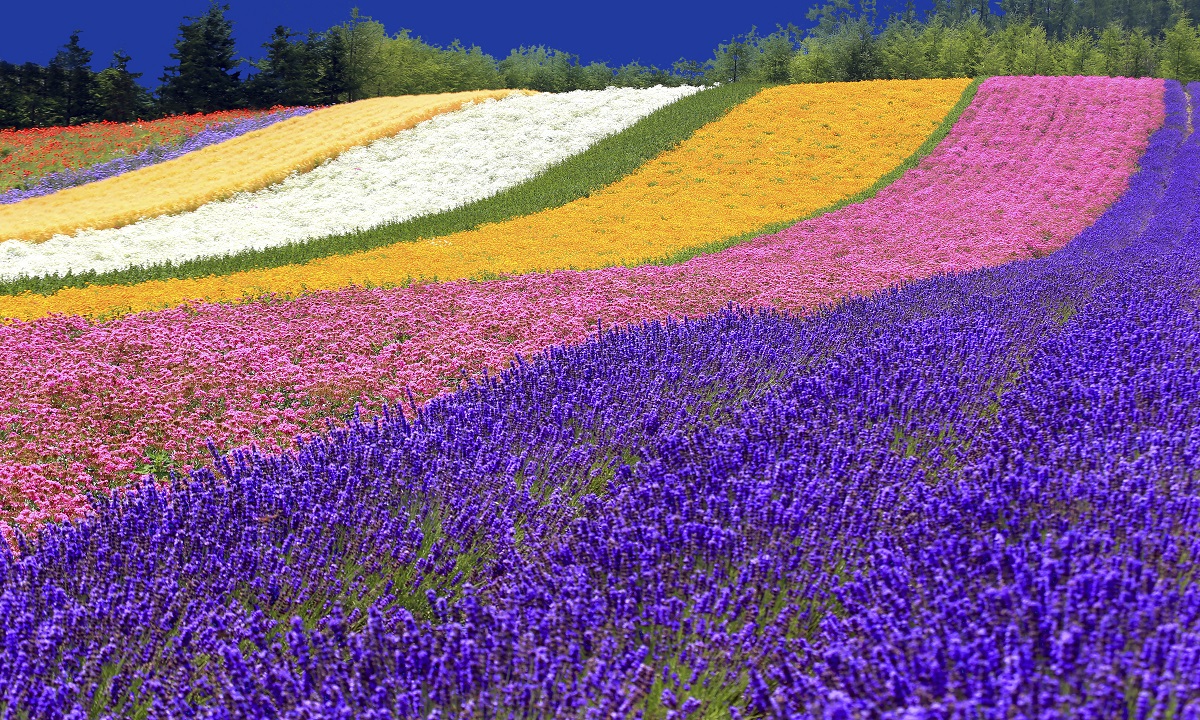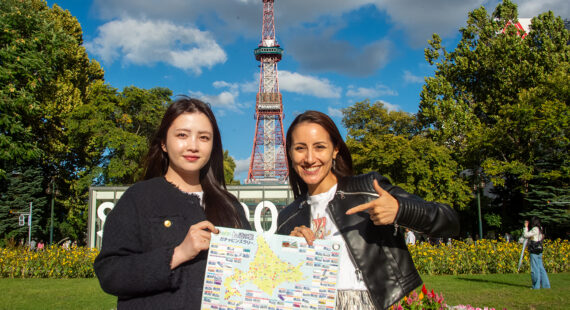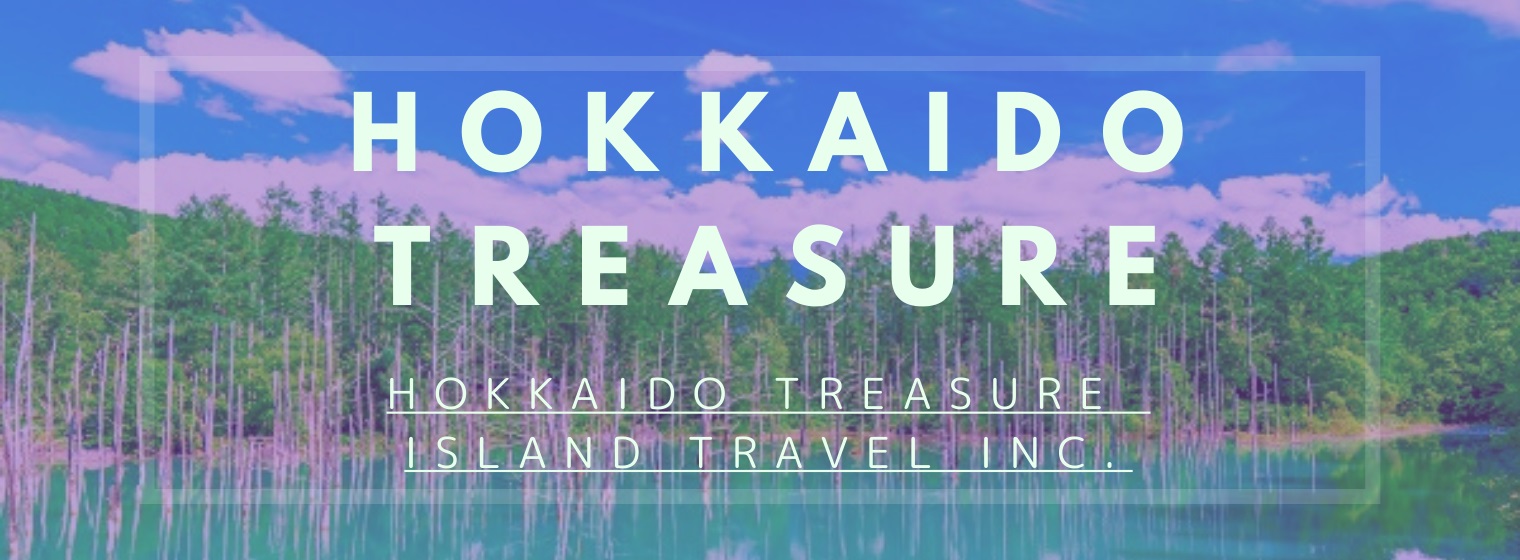Lake Shikaribetsu is located in Tokachi subprefecture, Eastern Hokkaido, Japan. It’s hidden up deep in the Daisetsuzan mountains in the middle of the Shikaribetsu volcanic group at an elevation of 810 meters (2,658 feet), which makes it the highest altitude lake in Hokkaido. The closest towns to Lake Shikaribetsu are Shikaoi and Kamishihoro, which are both idyllic rural towns. A bit further down to the south from the lake lays the city of Obihiro and across the mountains to the west is Furano city.
The lake is known for the spectacular view over the lake and the surrounding mountains in the day and breathtaking starry skies in the night. In the lake’s extremely clear waters live Miyabe Charr, fish that can be found only in Lake Shikaribetsu. The mountainous area around the lake is also home to Japanese pikas, cute little mammals relative to rabbits. The lake and the area around it are part of the vast Daisetsuzan national park abundant with untouched nature, which makes it a treasure chamber for outdoor persons.
In this blog column, you can learn about Lake Shikaribetsu and its surroundings and how to enjoy the abundant nature there during your off-the-beaten-path private tour in Hokkaido.
About Lake Shikaribetsu
Lake Shikaribetsu is tucked away among the mountains of the Shikaribetsu volcanic group in the Daisetsuzan mountain range in the eastern Hokkaido, north Japan. The location is quite far from the main hub of Hokkaido, Sapporo City, and from Chitose airport, the main airport of the island. The distance between Sapporo and Lake Shikaribetsu is about 205 kilometers (about 127 miles) and it takes a bit more than 3 hours to travel from Sapporo to the lake. The distance between Chitose airport and Lake Shikaribetsu is about 169 kilometers (105 miles) and the journey takes about two and a half hours.

The circumference of Lake Shikaribetsu is about 14 kilometers (6.7 miles) and the maximum depth is 108 meters. With an altitude of 810 meters (2,658 feet), it’s the lake at the highest altitude in Hokkaido. The altitude being so high, the weather can be drastically different up at the lake compared with the weather at the foot of the mountain. It is not rare that it’s cloudy down but the skies are clear-blue up at the mountains and the lake. There are also two smaller lakes close to the southern shores of Lake Shikaribetsu: Lake Komadome and Lake Shinonome.
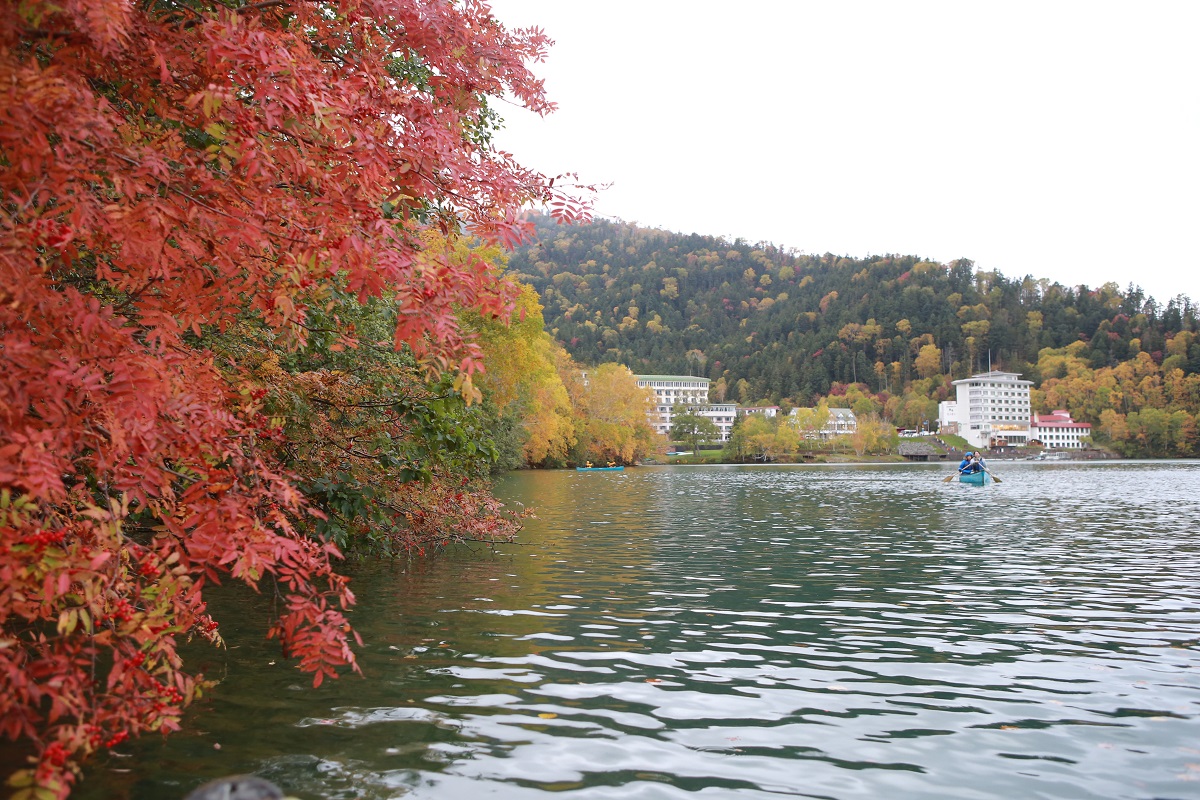
Lake Shikaribetsu was formed in the lava domes of Mt. Higashinupkausi-nupuri and Mt. Nishinupkausi-nupuri when the inflow river of the lake, River Yanbetsu, was dammed by a volcanic eruption. The lake is surrounded by several mountains, such as Hakuunzan (1,186m/3,890ft), Mt. Tenbouzan (1,174m/3852ft), and the aforementioned Mt. Higashinupkausi-Nupuri (1,252m/4107ft) and Mt. Nishinupkausi-Nupuri (1,251m/4104ft), just to mention a few.
The name of the lake comes from the Ainu language, which is the language of the indigenous Ainu people of Japan and Russia. ‘Shikaribetsu’ is the Japanese version of the name but the original Ainu name is ‘sikari pet’, in which ’si’ means ‘oneself’, ‘kari’ means ‘to turn’ and pet’ means ‘a river’, so the meaning is ‘a river that turns itself’. The reasoning behind the name is that the other rivers in the area flow pretty much straight to the south but the Shikaribetsu river—the outflow of Lake Shikaribetsu—takes first a route to the west instead. So, instead of running straight to the south like the other rivers, it turns itself to the west, hence the name. The lake got its name from the name of the outflow river.
Abundant nature around Lake Shikaribetsu
Lake Shikaribetsu competes for the title of the clearest lake in Japan with another Hokkaido lake, Lake Mashu. Regardless of the actual position being the first or the second, Lake Shikaribetsu is just amazing: In summer, the lake is surrounded by lush green forest, in the autumn the leaves turn golden and scarlet, in the winter, the still trees are covered with pure white snow waiting for the spring to come again.
In the lake lives Miyabe Charr—a subspecies of Dolly Varden Trout—that is unique species found only in Lake Shikaribetsu. The fish are not an endangered species and they can be caught but the number is controlled to ensure the sustainability of recreational fishing.
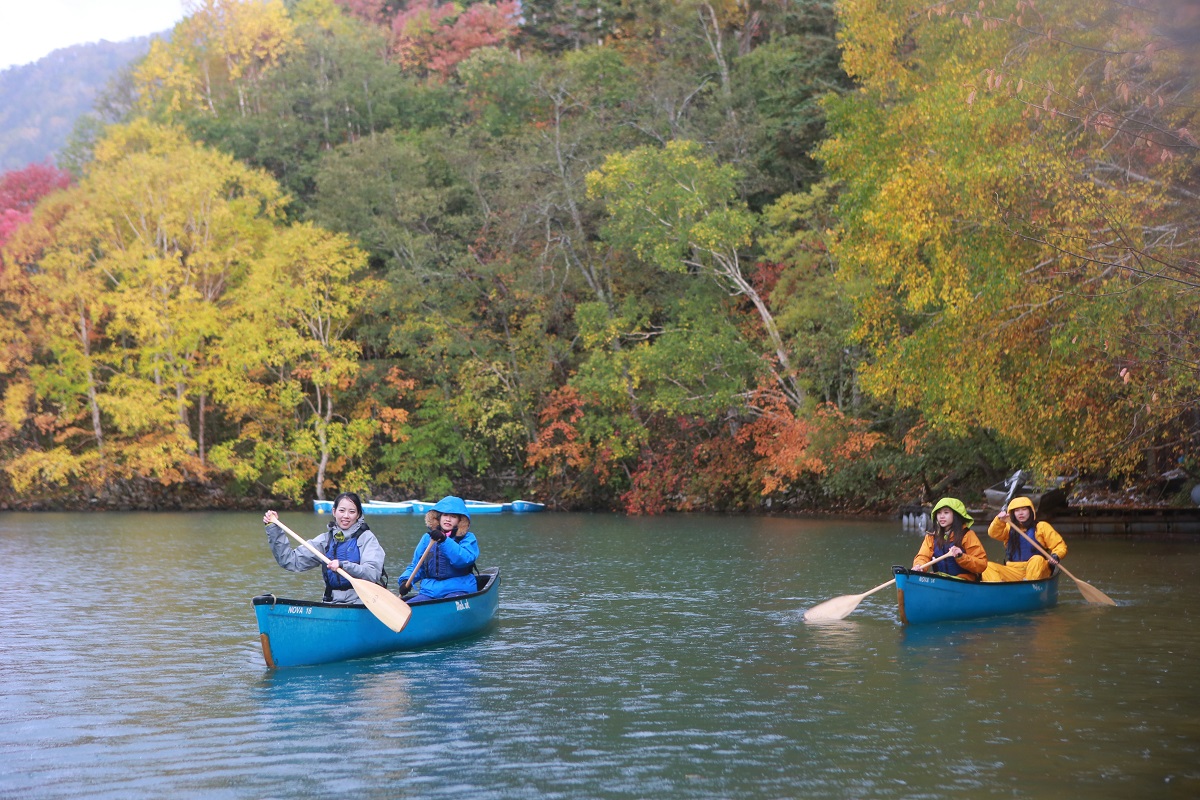
There is a tour bout that takes about 40-minute-long tours at the lake, but for a more personalized and relaxed experience, it’s better to hop in a kayak and paddle the lake at your own pace. Kayaking is especially fun activity in the fall when the forest around the lake blazes in the autumn colors. From the kayak, you can also take a closer look at Benten Island (Bentenjima); a tiny island in the middle of the lake with a Torii gate. Benten Island is considered a spiritual ’power spot’ and some people come to visit the lake just to see and feel the energy of the island.

In the mountains surrounding the lake lives a curious small mammal: Northern pika—a relative of rabbits but with a much smaller body and round ears. The pikas live only in cold and high mountainous areas and dig their burrows in the turf between the rocks. They are sometimes claimed to be living relics from the Ice Age. In Japanese pikas are called ‘nakiusagi’, that is ‘calling rabbits’, and also in English, they are sometimes referred to as ‘whistling hares’, which refers to the high-pitched sounds the pikas make. There is a good chance to get a glimpse of some of the pikas while hiking the mountains—especially Mt. Hakuun—around Lake Shikaribetsu.
The lake falls also into the area of Tokachi Shikaoi Geopark (an outbound link). The unique geographical features of the area are wind tunnels and formation of the mountains with boulders and large rocks stacked on top of each other. The wind tunnels have preserved some permafrost and ice from 4,000 years ago and the forest surrounding the wind tunnels resembles that of the arctic circle because of the cold and damp environment the wind tunnels create. This kind of forest can be seen around Mt. Higashi-Nupukaushinupuri. The distinctive stacked rock topography to the area can be seen at Senjokuzure Block Slope, which also is a good place for pika spotting.
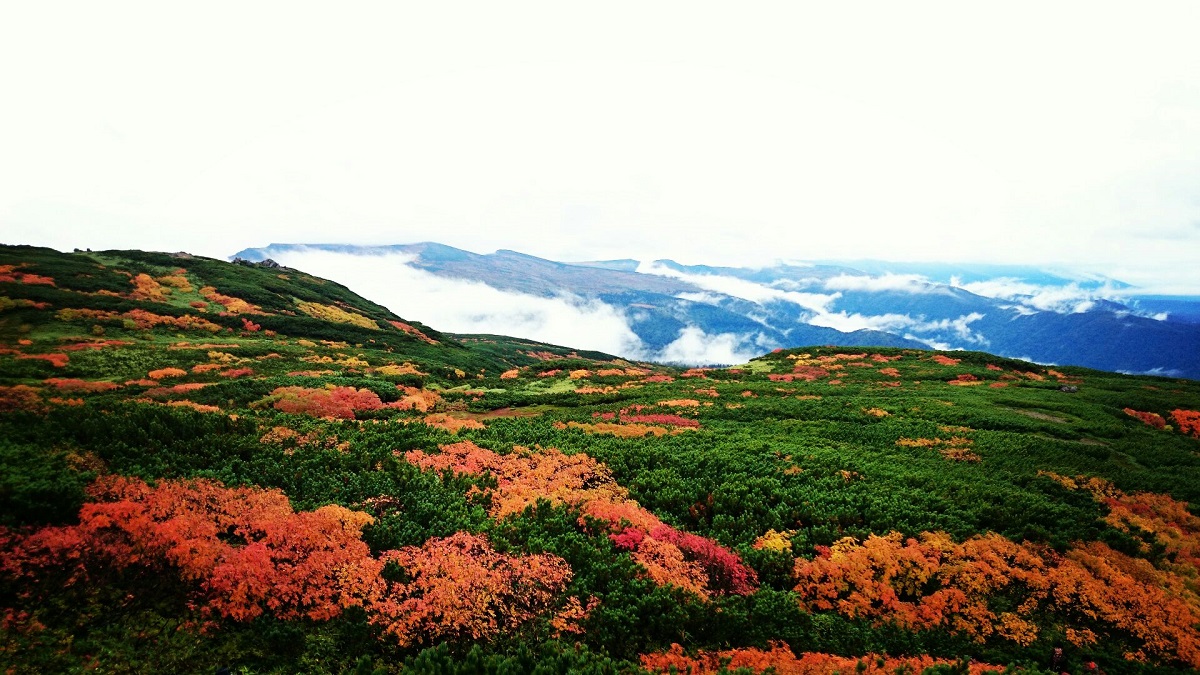
Lake Shikaribetsu is the only natural lake in the Daisetsuzan National Park, the largest national park in Japan. The enormous mountain range of Daisetsuzan is the spine of Hokkaido and divides the island into western and eastern parts. The vast national park consists of four areas: Omote Daisetsu area (“Front Daisetsu”), North Daisetsu area, East Daisetsu area, and Tokachirenpo area. Lake Shikaribetsu with its surroundings falls into the East Daisetsu area, sometimes also called the Back Daisetsu area.
If you want to know more about Daisetsuzan National Park and Omote Daisetsu area of the national park, see also our earlier blog column “Daisetsuzan national park: The playground of the gods”.
Our recommended activities around Lake Shikaribetsu
As anyone can see after reading about Lake Shikaribetsu and its surroundings above, the area offers unique hiking and trekking opportunities for nature lovers. Together with a local guide, it is safe for even beginner hikers and trackers to explore the area. We at Hokkaido Treasure Island Travel are more than happy to help you to plan your dream travel at Lake Shikaribetsu! Just let us know which activities tickle you right and we can make together a travel plan for you.
For about a three-hour-long hiking trip, you can head off to Mt. Hakuunzan next to Lake Shikaribetsu. The trailhead to Mt. Hakuunzan is at the southern end of the lake and the trail is also suitable for non-experienced hikers. The summit of Mt. Hakuunzan offers an amazing view over Lake Shikaribetsu, so don’t forget to take your camera with you. There is also a chance that you can spot some of the pikas living on the rocky mountainside.
Kayaking at the lake allows you to get a better view of the lake itself as well as the surrounding nature. We recommend kayaking especially during the fall so you can get a full view of the glory of the autumn leaves of the forests surrounding the lake.
Like the whole of Japan, the area around Lake Shikaribetsu is volcanically active, which means that there are also onsens—that is hot springs—around. Another activity we strongly recommend is a trip to Shikaribetsukyo Gorge and the wild natural onsens you can find there. There are several small natural onsen pools along the river flowing in the gorge, so just take your towel and swimsuit with you and head to an unforgettable wild onsen experience! Just contact us and we can arrange a guided trip with a local guide to the wild onsens.

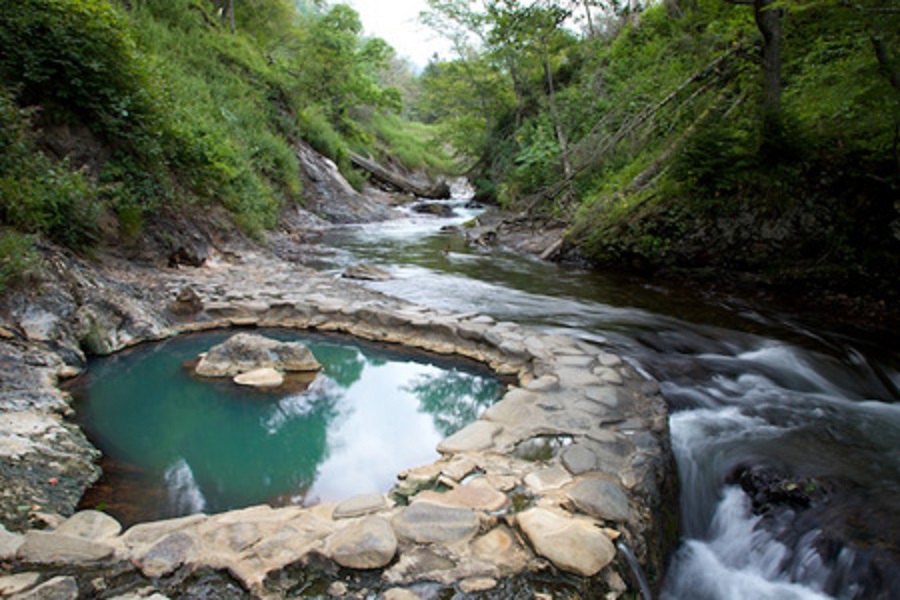
If you rather bathe indoors, there is an onsen spa―Lake Shikaribetsu Hot Spring Hotel Fusui (an outbound link)―located at the southern shore of Lake Shikaribetsu. The rotenburo outdoor baths of the onsen spa gives an amazing view of the lake during any season.
In the winter, there are some chances for backcountry/off-piste skiing in the area, but there is relatively little snow compared to the western side (Sea of Japan side) of the Daisetsuzan mountain range. However, backcountry skiing offers a chance to enjoy wonderful views over the Tokachi plain for example from Mt. Higashinupukausi (an outbound link).
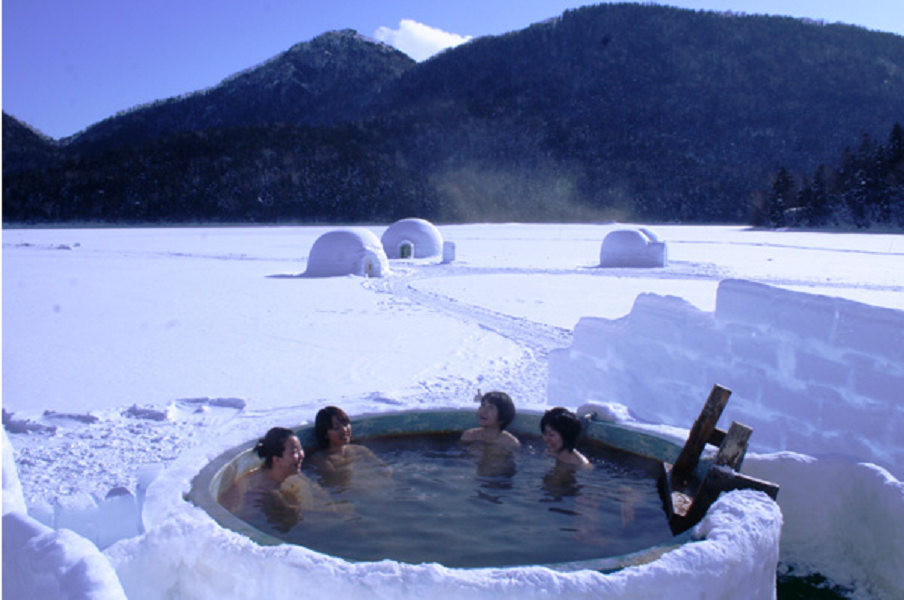
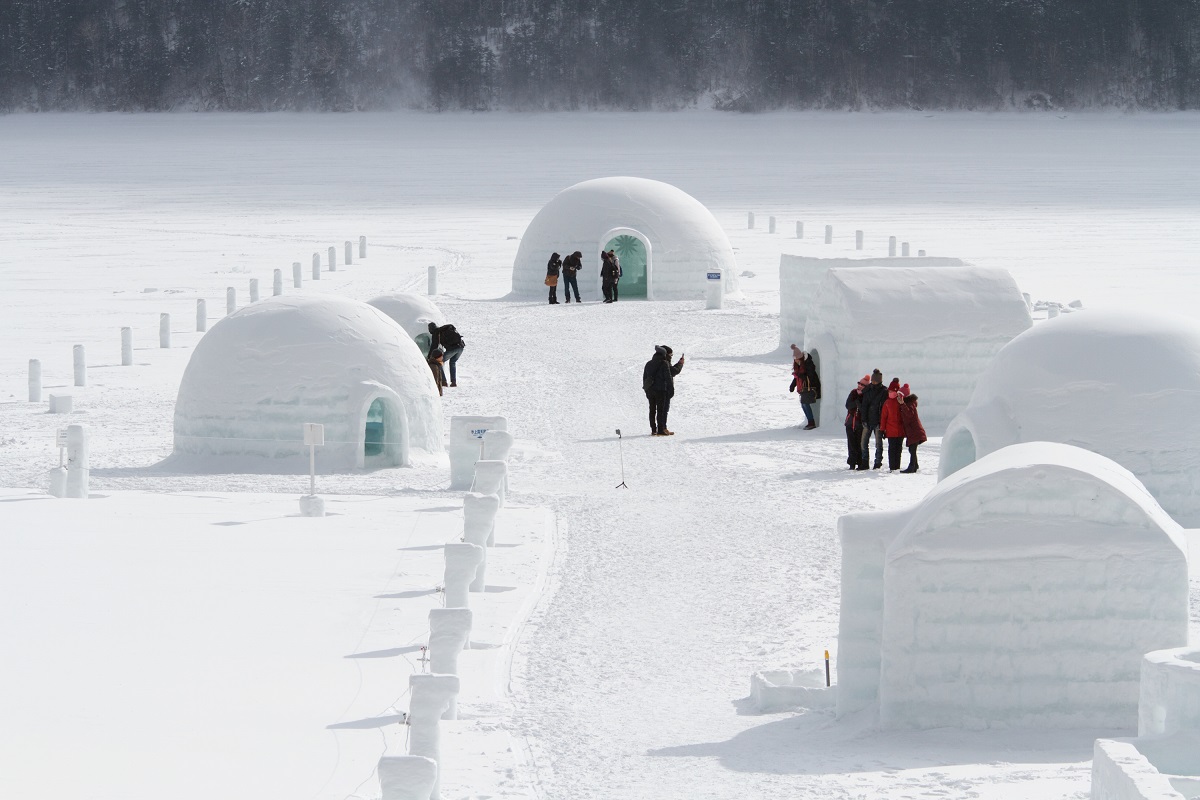
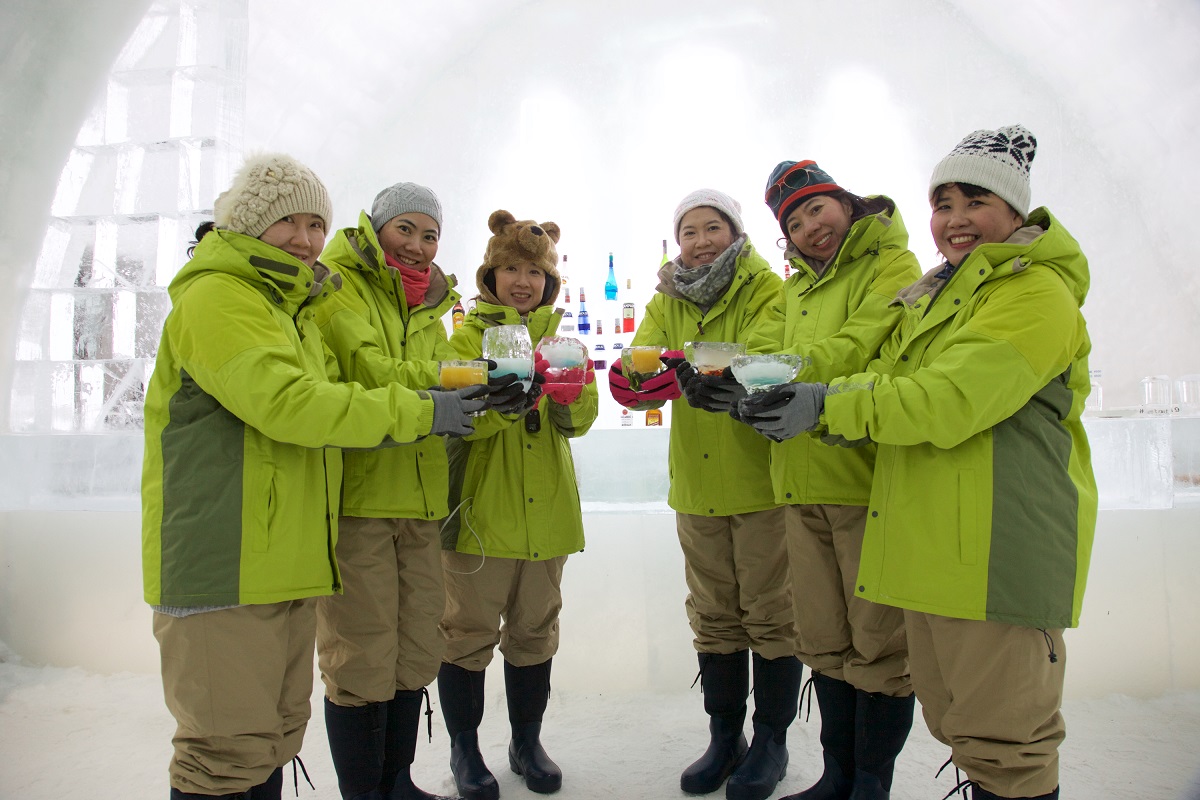
As a bit more touristy activity during the winter, you can visit the Shikaribetsu kotan (‘kotan’ stands for ‘a village’ in the Ainu language), that is, a snow village built yearly on the frozen Lake Shikaribetsu. The event is open between the end of January to mid-March, depending of course on the strength of the ice, the temperature and the weather conditions of the year. In Shikaribetsu kotan, you can visit different kinds of igloos and snow castles, at the Ice Bar, you can enjoy a drink from a cup you have carved yourself from ice, or might even get a chance to dip into a rotenburo outdoor hot spring bath made of ice.
Sightseeing in the cities near Lake Shikaribetsu
If you would rather like to stay in a city close to Lake Shikaribetsu and take a day trip or two to the lake, the closest options for you are Obihiro in the south and Furano in the west. Obihiro is the closest: it’s 58 kilometers (36 miles) and about an hour-long drive from the lake. To get to Furano, you have to cross the mountains through the Karikachi pass, and to get to the pass, you need to go quite a bit down to the south. This makes the distance between Lake Shikaribetsu and Furano about 110 kilometers (68 miles) and 2 hours in measured in time.
Furano is known for its amazing flower fields, which stretche on all the way to the horizon, especially purple lavender fields. There are different kinds of cultivated flowers blooming through late spring to early autumn but if you would like to see the famous lavender fields, you should visit Furano in late June or early July. As explained earlier, the east side of Daisetsuzan—where Lake Shikaribetsu is located in—doesn’t get as much snow as the west side. So, if you are into skiing, you should head to Furano. The slopes at Furano ski resort get a copious amount of some of the finest powder snow in Hokkaido and the whole world. Check out our earlier blog column about Furano to get to know more about the city: ‘Furano: The city of lavender’.
So, what do you think: How about adding Lake Shikaribetsu to your private tour itinerary? You can stay longer at the lake itself or you can combine a tour to the lake with staying in one of the cities close by, it’s up to you. If you feel that Lake Shikaribetsu needs to be your next dream travel destination, let us know in the inquiry form!
